Home
The Dead Bar
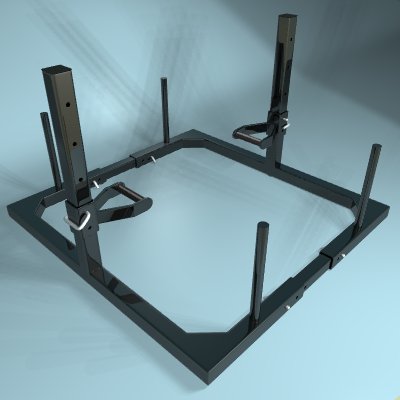
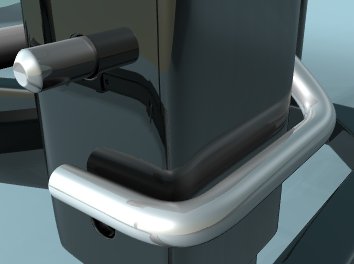
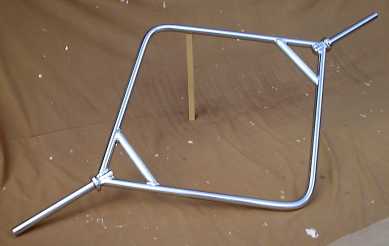
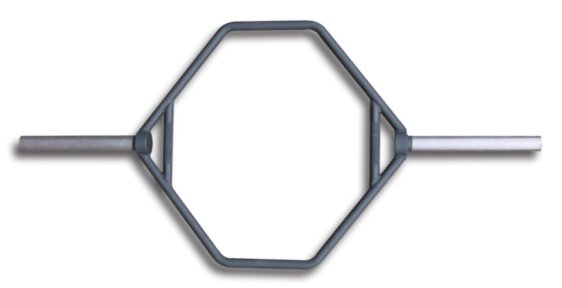
Simples
Designing and building biomechanically sound weight training equipment, whether it be free weight or machine equipment is easy. Of course turning it into a successful business is hard.
I can do the former with no problem...
Centre of Mass
The Trap Bar and the Shrug Bar are obviously Trap Bars - the Dead Bar however is radically different. The Dead Bar approaches the problem of parallel deadlifting by putting the centre of mass under the handles along the same lines as that employed on the 4×4 Bar. It achieves this by having the plates lie flat (no collars needed) and spreading them along 4 vertical horns.
The result of this is that the Dead Bar suffers none of the tilting problems that the Trap/Shrug Bar suffers. When deadlifting a Trap/Shrug Bar tilts forward. This happens because the centre of gravity is directly in line with the handles so as the lifter lifts, the wrists assume the 'pistol' grip position and so active effort is required to stop the Trap/Shrug Bar slipping out of the grip.
With the Dead Bar the centre of gravity is under the handles so the Dead Bar can't start tilting one way - the result is it feels solid rather than twitchy so total effort can be put into lifting the weight rather than controlling the tilt. The Dead Bar is rather like a kettlebell in the sense that the centre of gravity is below the handles and just like a kettlebell in cannot flip out of the grip.
The Trap Bar is a very limited piece of equipment to use because only one thing can be done on it, i.e. Trap Bar lifts from Olympic height radius. To overcome this some Trap Bar have bolt on extensions added so the Trap Bar fits in a power rack. With the Dead Bar you simply move the handles up and down. Not only is this fast but it means that no unloading is necessary to move the Bar to different heights. The Dead Bar adjusts, in height, from 225 mm to 600 mm effective plate radius in 25 mm increments, so full reps or partial superheavies or anything in between can be performed. The result is that the Dead Bar can be used for a variety of lifts rather than sitting in the corner waiting for Trap Bar lifts from 225 mm.
Of vital importance and something not achievable by Trap/Shrug bars is the fact that the handle spacing can be adjusted. Most Trap Bars are made overwide because everyone can use an overwide bar, though for a large person it can be too narrow. This means the majority of people have a hand spacing that is too wide, hence the shoulders don't feel quite right and so a direct pull cannot be achieved. Not only does handle spacing vary with lifter but it also varies with the style each lifter assumes and from what height the lifter chooses to lift. I use a 560 mm spacing whereas the diamond shaped Trap Bar photoed above is fixed at 610 mm. You can adjust the Dead Bar, in width, in 25 mm increments from 460-735 mm.
Halves
The Dead Bar can be used as one unit like a strongman Frame Walk or as two independent halves like in a Farmer's Walk. The horns of each half are in line with the handle of each half hence each half is perfectly balanced. Unlike a regular Farmer's Walk the halves do not hit the legs which means heavy weights can be lifted 'comfortably'. The handles can, of course, be adjusted up and down to work different areas of the lift.
Side Bends
You can't do side bends with free weights at least not without dumbbells jambing into the leg and barbells are too long. With a Dead Bar you can do side bends with free weights!
One Hand Deadlifts
Suitcase Deadlifts, one hand straddle Deadlifts, these can be done.
Shrugs
You can of course shrug the bar with the proper hand spacing when using it as a single unit or use it in halves fashion like dumbbells that don't jamb on the legs.
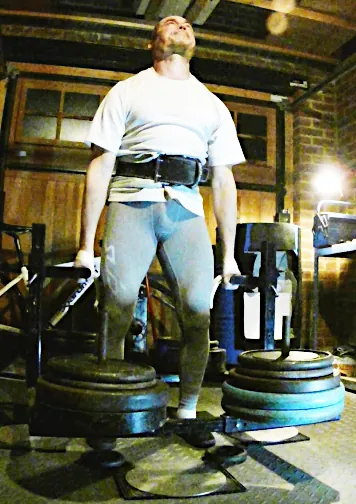
Summary
- The Trap Bar is a great lift but it does only one thing... with a Trap Bar you can only do Deadlifts from 225 mm plate radius. The Trap Bar thus sits in the corner for much of the time.
- With the Dead Bar you can alter the height of the handles quickly, as though using the Trap Bar in a power rack. Lift superheavy partials, lift mid-range, lift full range. You can even mix it up in one session - start with your max full range weight but for a partial and move the handles down as you warm-up. Do maxes at several heights. Practice holds, do reps. Do this in 25 mm increments.
- The Dead Bar doesn't tip like a Trap Bar, it stays perfectly level and steady.
- With the Dead Bar you can alter the handles to the optimum width. You cannot know the optimum grip without lifting for some time using a heavy weight and varying the width by way of experimentation. This grip may also vary with what height you are lifting from. Vary the grip width in 25 mm increments. Generally Trap Bars are made overwide to accommodate everyone - a bar that is too narrow can't be used by some people whereas everyone can use an overwide bar, hence most people put up with overwide grips. Of course a very large strongman fellow will find the standard Trap Bar too narrow.
- The Dead Bar can be separated into 2 independent halves for proper Farmer's Walks. Vary the handle heights to practice heavy walks and concentrate on grip. Lower the handles for lighter faster walks. Unlike a regular Farmer's Walk apparatus nothing rubs against the legs, which means you can go heavier. The Dead Bar halves stay perfectly level and steady. You can of course also use the 2 halves independently for deadlifts.
- The Dead Bar can be used for Side Bends; no plates or weights rub against the legs. The Dead Bar half stays perfectly level and steady.
- One Hand Deadlifts can be performed on the Dead Bar.
- Use the Dead Bar for shrugs adjust the handles to the optimum height and shrug away - do this with the Dead Bar as one unit or 2 halves.
- The Dead Bar takes masses of weights and no collars are needed. Its strong and doesn't flex. It has removable sleeves for Olympic Plates.
- The Trap Bar is dead, long live the Dead Bar!
Specifications
- Handle height: 225-600 mm
- Handle width: 460-735 mm
- Dead Bar Mass: 30 kg
- Farmer's Walk Mass: 26 kg
- Side Bend Mass: 13 kg
Farmers Walk

25th November 2023